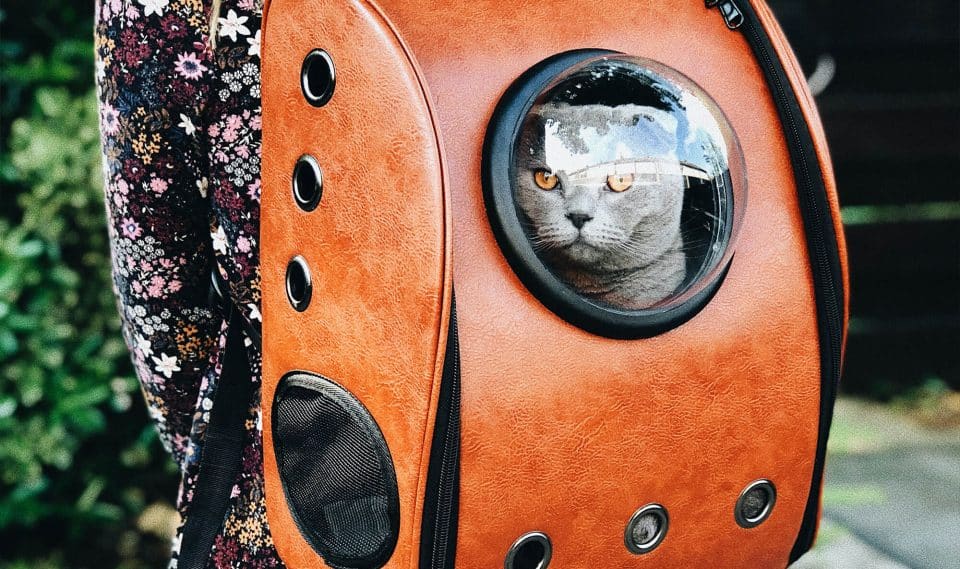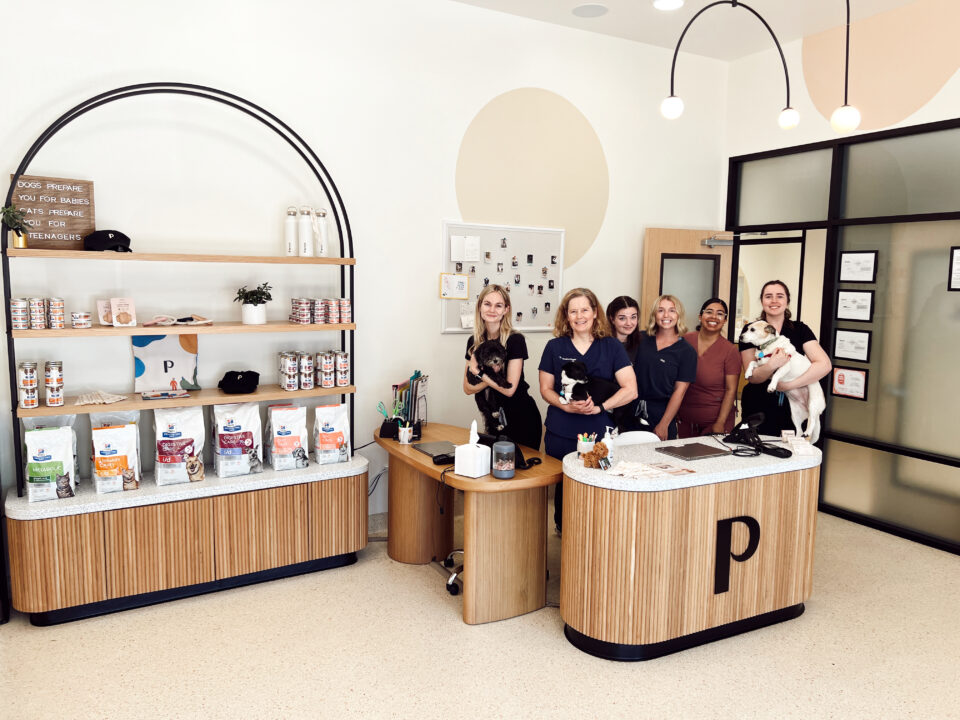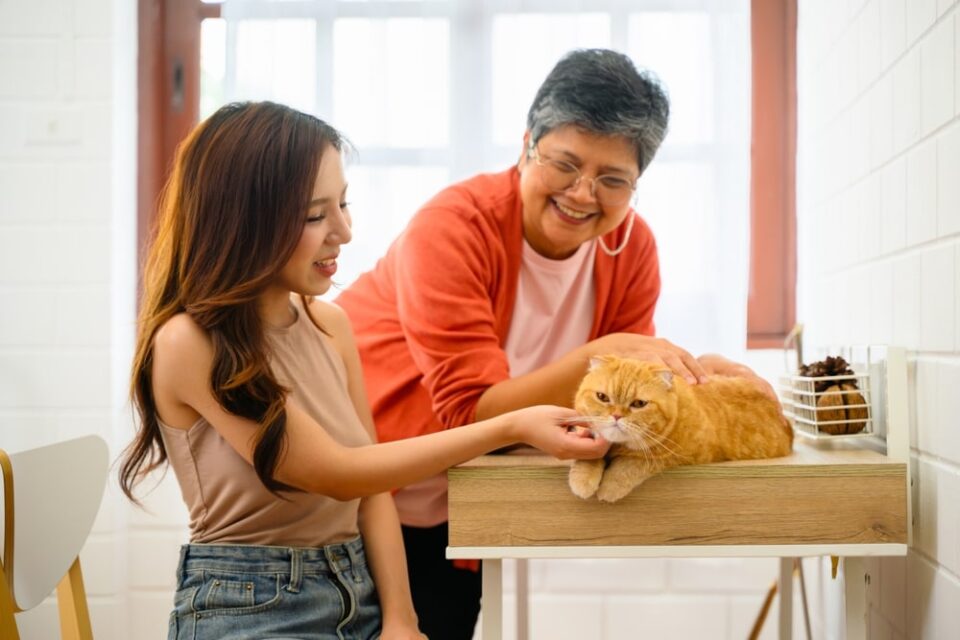Cats
5 min read
4 Steps for How to Get a Cat in a Carrier
Published on Jul 7, 2023

If there’s one thing a cat owner dreads, it’s getting their beloved pet into its carrier. Cat behavior can vary when it comes to their carriers—some felines dart under a heavy piece of furniture as soon as they catch a glimpse of their carrier. Others might have an easier time getting into the carrier—but then vocally express their hatred all the way to their destination. Either way, it can be an unpleasant experience for all parties, and forcing a cat into a pet carrier only creates more stress and increases the cat’s negative associations.
Of course, it’s easier to train a kitten to like its carrier, but adult cat owners shouldn’t despair. With plenty of practice, gentle persistence, and positive reinforcement, getting a cat in a carrier becomes second nature.
Step 1: Find the right carrier style
Because cat transport is clearly a challenge for many cat owners, there are a plethora of pet carrier styles to choose from. There are soft and hard ones, and even ones made from cardboard. There are cat carrier backpacks and bags, ones with handles, shoulder straps, or wheels (or ones that combine all of the above). The list goes on!
If you’re wondering how to get a scared cat to the vet, vets generally recommend finding a carrier that’s big enough for the cat to lie down or turn around, while still providing a snug and secure space. Also, a top-loading cat carrier—especially one with a side-opening carrier door—can make removing a cat from the carrier smoother, especially during cat wellness exams, smoother.
Whatever style you decide to use, the cat carrier should be held and moved steadily and evenly to keep the cat calm and for pet safety. Holding it from a handle can make it swing too much!
Step 2: Foster familiarity between your cat and their carrier
Leaving a cat carrier tucked away in the closet for most of the year isn’t going to help your cat get used to it. So, what if we just…left our cat carriers out?
It doesn’t need to be placed on your coffee table for all your guests to see, but placing the cat carrier in a place where your cat can sniff around or even go inside of the carrier helps them feel a little more at ease in its presence. With time, they might even view it as a cozy napping spot.
Step 3: Train your cat to see their carrier as a safe space
For extra travel-wary cats, it’s important to reassure them that their carrier is a safe place. To encourage a more positive association, you might try feeding your cat or giving them treats in the vicinity of their carrier. Over time, you can gradually get closer to the carrier until you’re feeding them from inside the carrier.
If they refuse to even go near the carrier, you could try out a treat ladder, where the closer your cat gets to the carrier the better the treats get. Start with a familiar, crunchy snack and end with something seriously special, like a spoonful of wet food or bonito flakes. With plenty of treats and praise, some pet parents have trained their felines to sit in their carrier on command.
Step 4: Start with shorter trips
Ideally, the first time you put your cat in its carrier shouldn’t be the same day as your vet visit. Your feline friend should be familiar or at least somewhat acquainted with their carrier well ahead of time. Start with taking your cat in its carrier for a walk around the house. If they seem somewhat relaxed, try a walk or a drive around the block. As their comfort levels increase, so can the length of your practice excursions.
By the time your appointment rolls around, your cat and you will feel carrier confident.
How to Keep Your Cat Calm in the Cat Carrier
Once you’ve mastered the art of getting your feline friend into the carrier, the next step is ensuring their comfort and calm throughout the process. Cats are highly sensitive creatures, and stress during travel can be challenging. Here are some essential tips to maintain a sense of serenity for your beloved pet:
- Maintain a Calm Demeanor: Cats often mirror their owner’s emotions. Stay calm and composed during the carrier experience. Speak softly and reassure your cat with a soothing tone.
- Use Familiar Blankets and Toys: Place a soft blanket, indoor cat toy, or a little catnip inside the carrier. The familiar scents and objects can provide comfort and a sense of security.
- Introduce Calming Pheromones: Consider using a feline-calming pheromone spray like Feliway on the carrier bedding. This can help reduce anxiety and promote relaxation.
- Cover the Carrier: For cats who feel overwhelmed by the outside world, consider covering the carrier with a lightweight blanket. This creates a cozy, safe environment and minimizes visual stimulation during travel with a cat in the car.
- Quiet and Gentle Transport: Keep the carrier steady and move it gently to avoid sudden jolts or movements that may startle your cat. A smooth, even ride can help maintain your cat’s calmness.
Regular Breaks and Comfort: During longer trips, make sure to take breaks to allow your cat to stretch, eat, drink, and use the litter box. These breaks provide a chance to soothe your pet and relieve any travel-related stress.
Mastering pet travel cat transport is only one small piece of cat ownership, but it’s an important one! Knowing how to easily get an unwilling cat in a carrier can save you time and stress, particularly if you’re on the way to a vet visit, in the process of moving, or if there’s an emergency and you need to move your feline friend quickly.
Another important piece of cat ownership is finding the right vet who prioritizes your cat’s physical and emotional wellbeing. Papaya Vet Care offers a team of experienced and compassionate veterinarians dedicated to providing the highest level of feline healthcare. With a focus on comprehensive wellness, preventive care, and personalized treatment plans, Papaya Vet Care ensures that your beloved cat receives the best possible care for a happy and healthy life.
The information in this blog is reviewed and approved by the certified veterinarians at Papaya Veterinary Care.














